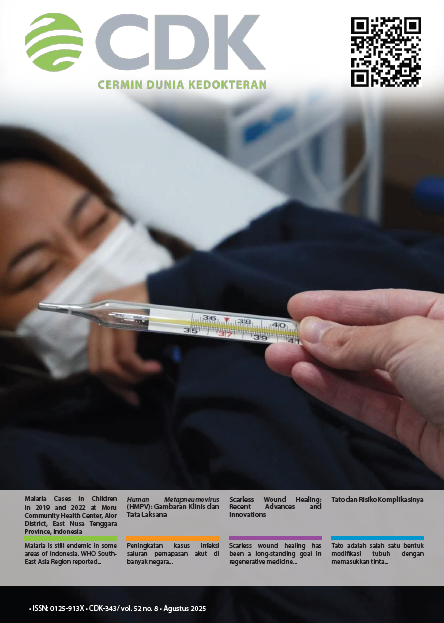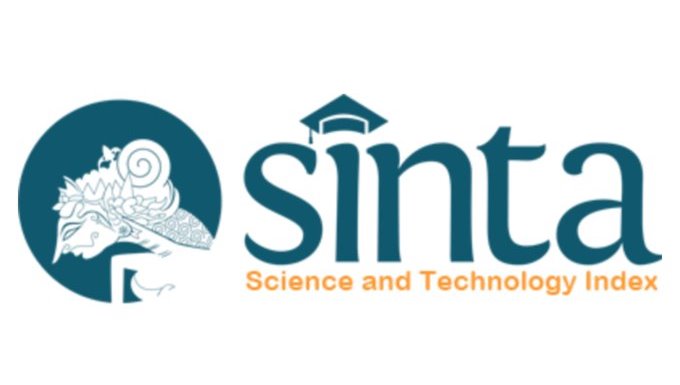Hypoalbuminemia: Pathophysiology and Management
Literature Review
DOI:
https://doi.org/10.55175/cdk.v52i8.1289Keywords:
Albumin, hypoalbuminemia, pathophysiology, treatmentAbstract
Hypoalbuminemia is a condition of low blood albumin concentration (<3.5 g/dL). Hypoalbuminemia reflects more on the level of physiological stress caused by one or more diseases than lack of nutrition. Hypoalbuminemia is found mostly in inpatient, critically-ill, and geriatric patients. Hypoalbuminemia causes poor functional state, longer hospitalization, and higher morbidity and mortality. The three most common causes of hypoalbuminemia are: (1) Decreased production of albumin, (2) Increased loss of albumin via the kidneys, gastrointestinal tract, skin, or extravascular space, and (3) Increased catabolism of albumin. Management of hypoalbuminemia is to find the underlying disease, and oral or parenteral supplementation of albumin. Parenteral albumin administration is recommended in specific conditions, such as patients with cirrhosis undergoing large-volume paracentesis (ascites >5 liters), hepatorenal syndrome, spontaneous bacterial peritonitis, and burns involving more than 30% of total body surface area after the first 24 hours. In patients with sepsis, acute respiratory failure, major non-cardiac surgery, or cardiac surgery, parenteral albumin may be considered when hemodynamic stability cannot be achieved with crystalloids. Conversely, parenteral albumin administration is not recommended as maintenance fluid or initial resuscitation in patients with acute traumatic brain injury.
Downloads
References
Kim S, McClave SA, Martindale RG, Miller KR, Hurt RT. Hypoalbuminemia and clinical outcomes: what is the mechanism behind the relationship? Am Surg. 2017;83(11):1220–7. doi: 10.1177/000313481708301123.
Saner FH, Stueben BO, Hoyer DP, Broering DC, Bezinover D. Use or misuse of albumin in critical ill patients. Diseases 2023;11(2):68. doi: 10.3390/diseases11020068.
Gounden V, Vashisht R, Jialal I. Hypoalbuminemia [Internet]. Treasure Island (FL): StatPearls Publishing; 2024 [cited 2024 Mar 15]. http://www.ncbi.nlm.nih.gov/books/NBK526080/.
Petch-In P, Saokaew S, Phisalprapa P, Dilokthornsakul P. The association of pre-operative serum albumin levels and post-operative in-hospital death in patients undergoing gastrointestinal surgeries in Thailand: a retrospective cohort study. Drugs-Real World Outcomes 2023;10(2):341–9. doi: 10.1007/s40801-023-00364-4.
Moramarco S, Morciano L, Morucci L, Messinese M, Gualtieri P, Carestia M, et al. Epidemiology of hypoalbuminemia in hospitalized patients: a clinical matter or an emerging public health problem? Nutrients 2020;12(12):3656. doi: 10.3390/nu12123656.
Pham TPT, Alou MT, Golden MH, Million M, Raoult D. Difference between kwashiorkor and marasmus: comparative meta-analysis of pathogenic characteristics and implications for treatment. Microb Pathog. 2021;150:104702. doi: 10.1016/j.micpath.2020.104702.
Carvalho JR, Verdelho Machado M. New insights about albumin and liver disease. Ann Hepatol. 2018;17(4):547–60. doi: 10.5604/01.3001.0012.0916.
Nagra N, Dang S. Protein-Losing Enteropathy [Internet]. Treasure Island (FL): StatPearls Publishing; 2024 [cited 2024 Mar 15]. Available from: http://www.ncbi.nlm.nih.gov/books/NBK542283/.
Grodin JL, Lala A, Stevens SR, DeVore AD, Cooper LB, AbouEzzedine OF, et al. Clinical implications of serum albumin levels in acute heart failure: insights from DOSE-AHF and ROSE-AHF. J Card Fail. 2016;22(11):884–90. doi: 10.1016/j.cardfail.2016.01.015.
Erdani F, Novika R, Ramadhana IF. Perbandingan efektivitas terapi ekstrak ikan gabus dengan putih telur dan human albumin 20% terhadap peningkatan kadar albumin pasien hipoalbuminemia di RSUD dr. Zainoel Abidin. J Med Sci. 2021;2(2):123–9. doi: 10.55572/jms.v2i2.49.
Purwoko P, Santoso SB, Permana SA, Nugroho A, Hapsari PP, Yudhistira A. Comparison of freeze-dried snakehead fish albumin extract and intravenous albumin in treating patients with hypoalbuminemia. Drug Invent Today 2019;11(2):492–5.
Fatma N, Taslim NA, Nurilmala M. The protein and albumin contents in some species of marine and brackish water fish of South Sulawesi, Indonesia. AACL Bioflux. 2020;13(4):1976-85.
Lu H, Zhang Y, Liu P. Identifying new safety risk of human serum albumin: a retrospective study of real-world data. Front Pharmacol. 2024;15:1319900. doi: 10.3389/fphar.2024.1319900.
Arroyo V, Gines P, Gerbes AL, Dudley FJ, Gentilini P, Laffi G, et al. Definition and diagnostic criteria of refractory ascites and hepatorenal syndrome in cirrhosis. International Ascites Club. Hepatol Baltim Md. 1996;23(1):164–76. doi: 10.1002/hep.510230122.
Stander M, Wallis LA. The emergency management and treatment of severe burns. Emerg Med Int. 2011;2011:161375. doi: 10.1155/2011/161375.
Moschopoulos CD, Dimopoulou D, Dimopoulou A, Dimopoulou K, Protopapas K, Zavras N, et al. New insights into the fluid management in patients with septic shock. Med Kaunas Lith. 2023;59(6):1047. doi: 10.3390/medicina59061047.
Itagaki Y, Yoshida N, Banno M, Momosaki R, Yamada K, Hayakawa M. Efficacy of albumin with diuretics in mechanically ventilated patients with hypoalbuminemia: a systematic review and meta-analysis. Medicine (Baltimore). 2022;101(37):e30276. doi: 10.1097/MD.0000000000030276.
Rasmussen KC, Hojskov M, Johansson PI, Kridina I, Kistorp T, Salling L, et al. Impact of albumin on coagulation competence and hemorrhage during major surgery: a randomized controlled trial. Medicine (Baltimore) 2016;95(9):e2720. doi: 10.1097/MD.0000000000002720.
Liumbruno G, Bennardello F, Lattanzio A, Piccoli P, Rossettias G. Recommendations for the use of albumin and immunoglobulins. Blood Transfus. 2009;7(3):216–34. doi: 10.2450/2009.0094-09.
Oddo M, Poole D, Helbok R, Meyfroidt G, Stocchetti N, Bouzat P, et al. Fluid therapy in neurointensive care patients: ESICM consensus and clinical practice recommendations. Intensive Care Med. 2018;44(4):449–63. doi: 10.1007/s00134-018-5086-z.
Downloads
Published
How to Cite
Issue
Section
License
Copyright (c) 2025 Cynthia Lady Angelia

This work is licensed under a Creative Commons Attribution-NonCommercial 4.0 International License.





















